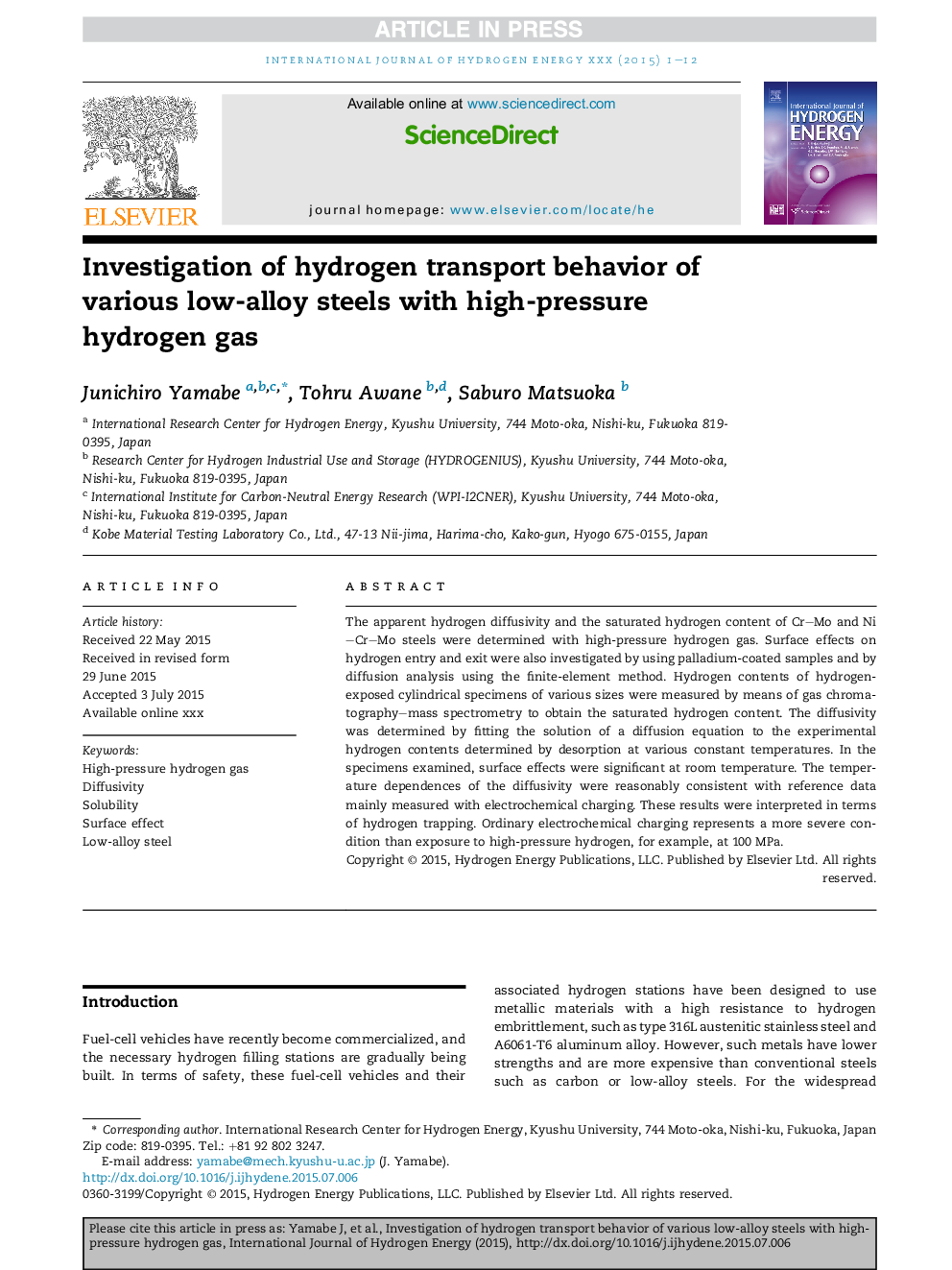| Article ID | Journal | Published Year | Pages | File Type |
|---|---|---|---|---|
| 7714712 | International Journal of Hydrogen Energy | 2015 | 12 Pages |
Abstract
The apparent hydrogen diffusivity and the saturated hydrogen content of Cr-Mo and Ni-Cr-Mo steels were determined with high-pressure hydrogen gas. Surface effects on hydrogen entry and exit were also investigated by using palladium-coated samples and by diffusion analysis using the finite-element method. Hydrogen contents of hydrogen-exposed cylindrical specimens of various sizes were measured by means of gas chromatography-mass spectrometry to obtain the saturated hydrogen content. The diffusivity was determined by fitting the solution of a diffusion equation to the experimental hydrogen contents determined by desorption at various constant temperatures. In the specimens examined, surface effects were significant at room temperature. The temperature dependences of the diffusivity were reasonably consistent with reference data mainly measured with electrochemical charging. These results were interpreted in terms of hydrogen trapping. Ordinary electrochemical charging represents a more severe condition than exposure to high-pressure hydrogen, for example, at 100Â MPa.
Related Topics
Physical Sciences and Engineering
Chemistry
Electrochemistry
Authors
Junichiro Yamabe, Tohru Awane, Saburo Matsuoka,
